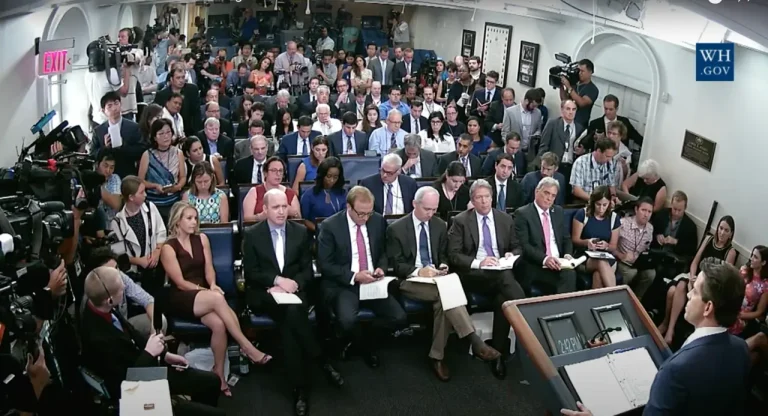4 reasons to do a communications audit
What is a communications audit and why does your company need one? Affiliate consultant Katrina Gill gives us the skinny on this essential tool.
Let’s face it: Communications professionals have demanding jobs. Sometimes it can feel like you’re on a hamster wheel, responding to many different stakeholders’ commands: “Write this, do that. Put this in the newsletter.” And during the pandemic, comms teams have been in overdrive. From alerts about office closures to vaccination policies to office re-openings, the list goes on and on.
When we launch a communications audit—or assessment—we begin with a key question: What are you trying to measure and improve? And we build an assessment around that.
We aim to identify which communications engage, educate and unite employees the most, and which vehicles or messages a company should discontinue. Once we know the direction to take, we can begin to plot how to change employee behavior—whether it’s a new sales approach or a fresh way to respond to customer queries. Here’s a Q&A with Katrina Gill, Ragan Consulting Group affiliate and founder of Gill Research:
What is the most important question comms pros need to ask?
The essential question is: What did you do upon seeing XYZ communication?
Companies need to know if employees understand and act on the communications they receive, across all mediums. If employees do not understand what their employer is telling them, or don’t care, or don’t act, then the company cannot meet its business goals. For this reason, understanding how employees perceive and react to communications materials—or events—is essential to any communications department or C-Suite.
What tools do you use to conduct the audit?
We use a combination of quantitative and qualitative tools such as:
- Comprehensive and pulse surveys
- A thorough review and content analysis of several months’ worth of communications
- Individual in-depth interviews with executives and key stakeholders
- Focus groups with employees
- Personas—job shadowing—virtual or in-person visits with employees during their workday
Tell us more about the job shadowing you do, and how resulting personas contribute to the audit process.
Let’s take a hospital. While administrators, accountants, and other professionals might still be working remotely, nurses and doctors are on site. While someone in the billing department might be in front of her computer all day, a nurse looks at his email maybe just a couple times per day. Communications teams need to figure out how best to reach people based on their lifestyle, schedule, and role within the organization.
Let’s take a nursing persona: Jack starts his shift at 7 a.m. He might check his email when he gets in, so it would be a good idea to make sure important communications hit his inbox early in the morning. When he has breaks between patients, he might check a digital board, located where employees congregate in private. A five-minute huddle with his boss might provide the information he needs and a chance to ask questions.
Before the pandemic, we would job shadow and observe employees in person to fully understand their routine and how they reacted to communications materials. In recent months, we’ve stayed in touch via email and phone calls throughout the day as part of the research process.
What types of questions do you ask during employee interviews or focus groups?
We conduct audits on behalf of our clients to know what’s working, what’s not, and how to change or improve employee behavior. Questions that help us get there include:
- Did you read this email (or watch this town hall, etc.)?
- If not, why not?
- If so, what we were you expecting when you opened the email/watched the town hall? Did you understand its contents? What’s missing?
- Upon reading the email, how were you able to take what you learned and apply it to your job?
Getting answers to these questions is critical to an audit’s success. Yes, we gather open and click-through rates, but those numbers tell only half the story. If thousands of people open an email, but only a few hundred click, then that tells us something about the content is not resonating with employees. And you need to know what they’re doing after they read the email…how does their behavior change? Qualitative responses fill the gaps in our understanding.
How, and why, has a client changed communications activities following an audit?
We recently worked with a 15,000-person organization. At the height of the pandemic, the comms team started producing weekly leadership calls with a very constructive Q&A session at the end. Based on positive feedback, they started to cascade the event content via emails. They stopped doing other things, such as a printed newsletter and a daily posting with “the top 5 things you need to know.” In this regard, an investment in the audit not only generated departmental savings and but also led to a long-term approach for sharing info employees want and need.
Why should companies conduct an employee comms audit now?
Four primary reasons:
- Many employees have been working remotely for 1.5 years now. With the Delta variant’s adverse effect on COVID-19 infection rates, some companies are not returning to the office as quickly as they had hoped. Amidst this continued flux, it’s more important than ever to keep lines of communication open, seek employee feedback, and act on it.
- Data drives decision-making. Executives often say, “What gets measured gets done.” I say, “What gets measured gets valued.” Now is the time for comms pros to change how they think and talk about their own roles. Instead of saying “I think such and such approach will work,” they should say, “The data shows us we need to communicate X message this way.” Such an approach will give you a valuable seat at the table, where you can participate in strategic planning.
- At the same time, many employees like being part of the data-gathering process, which gives them the opportunity to interact and engage with their employers—something they may not be doing as frequently as they once did, given the virtual nature of work. We have found that communications audits—while requiring people’s time and concentration—actually improve relationships with employees.
- Retention is another big reason to do an audit now. Earlier this year, Microsoft published a study concluding that 41% of people around the world are thinking of changing jobs. Here again, asking for employee feedback is a positive step—and the more positive people feel about their employer, the more engaged and connected, the more likely they are to stay.
Katrina Gill is an expert in polling and an affiliate consultant at Chicago-based Ragan Consulting Group. which specializes in corporate communications training, consulting and strategic counsel. Sally O’Dowd is a freelance writer who frequently reports on organizational communications.
Contact our client team to learn more about how we can help you with your communications. Follow RCG on LinkedIn and subscribe to our weekly newsletter here.







